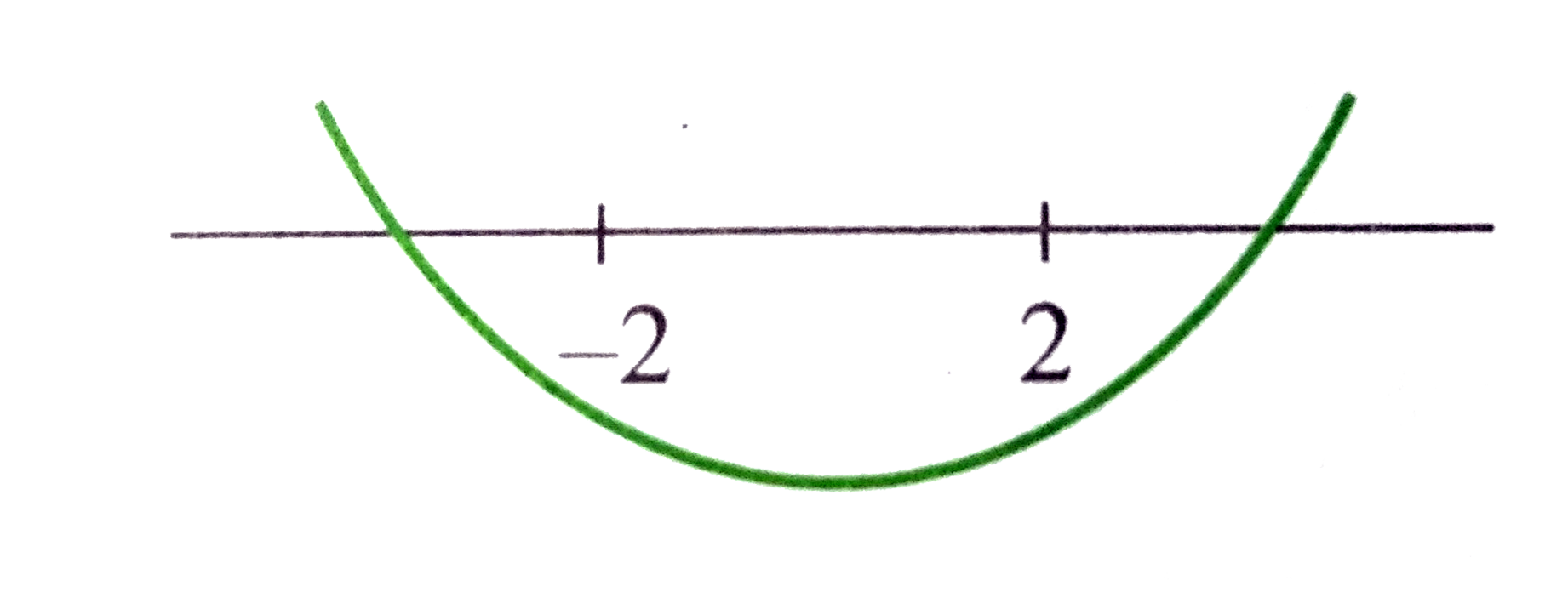If x4+2kx3+x2+2kx+1=0
has exactly tow distinct positive and two distinct negative roots, then find the possible real values of k.
The given equation is (x2+1x2)+2k(x+1x)+1=0
or (x+1x)2+2k(x+1x)+1=0
Putting x+1x=t, the above equation to t2+2kt−1=0
Now, we know that x+1x≥2ifx>0,andx+1x<−2ifx<0 .
So, one of the rots of t2+2kt−1=0 will lie in (−∞,−2) and other root in (2,∞).
∴f(−2)<0
⇒4−4k−1<0
or k>3/4
And f(2)<0
⇒4+4k−1<0
or k<−3/4
Henc, k ∈ϕ.

Topper's Solved these Questions
- BOOK - CENGAGE PUBLICATIONCHAPTER - THEORY OF EQUATIONSEXERCISE - CONCEPT APPLICATION EXERCISE 2.13videos
THEORY OF EQUATIONS
- BOOK - CENGAGE PUBLICATIONCHAPTER - THEORY OF EQUATIONSEXERCISE - CONCEPT APPLICATION EXERCISE 2.25videos
THEORY OF EQUATIONS
- BOOK - CENGAGE PUBLICATIONCHAPTER - THEORY OF EQUATIONSEXERCISE - ILLUSTRATION121videos
THEORY OF EQUATIONS
- BOOK - CENGAGE PUBLICATIONCHAPTER - STRAIGHT LINESEXERCISE - ARCHIVES (NUMERICAL VALUE TYPE)1videos
STRAIGHT LINES
- BOOK - CENGAGE PUBLICATIONCHAPTER - THREE DIMENSIONAL GEOMETRYEXERCISE - All Questions291videos
THREE DIMENSIONAL GEOMETRY
Similar Questions
Knowledge Check
- Question 1 - Select One
If the roots of 5x2−kx+1=0 are real and distinct then
A−2√5<k<2√5Bk>2√5 onlyCk<−2√5 onlyDeither k>2√5 or k<−2√5 - Question 2 - Select One
If the equation 3x2−6x+k=0 has real and distinct roots, then the value of k is
Ak≤3Bk=3Ck>3Dk<3
If the equation x4+kx2+k=0 has exactly two distinct real roots, then the smallest integral value of |k| is:
View SolutionIf the equation sin2x−ksinx−3=0 has exactly two distinct real roots in [0,π], then find the values of k .
View SolutionIf the equation sin2x−ksinx−3=0 has exactly two distinct real roots in [0,π], then find the values of k .
View SolutionIf the equation (x1+x2)2+a(x1+x2)+3=0 has exactly two real roots which are distinct, then the set of possible real values of a is (−132,0) (b) (∞,−132) (−132,132) (d) (132,∞)
View SolutionIf the equation (x1+x2)2+a(x1+x2)+3=0 has exactly two real roots which are distinct, then the set of possible real values of a is (−132,0) (b) (∞,−132) (−132,132) (d) (132,∞)
View SolutionIf the equation (x1+x2)2+a(x1+x2)+3=0 has exactly two real roots which are distinct, then the set of possible real values of a is (−132,0) (b) (∞,−132) (−132,132) (d) (132,∞)
View Solution

